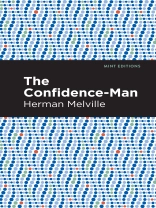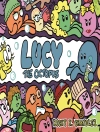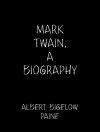The Confidence-Man (1857) is a novel by American writer Herman Melville. After the failure of his novels Moby-Dick (1851) and Pierre: or, The Ambiguities (1852), Melville struggled to find a publisher who would accept his work. When it was published, The Confidence-Man was seen as a flawed, unnecessarily complicated novel, and beyond several collections of poetry, it all but ended Melville’s career as a professional writer. When Melville’s work was reappraised in the 1920s, however, scholars recognized his status as one of nineteenth century America’s finest literary voices. A keen visionary, Melville’s satirical outlook and pessimistic sense of American morality drive the fragmented narrative of The Confidence-Man, his final, most complicated, and perhaps most rewarding novel.
In St. Louis, a mute man dressed in cream colored clothes boards a riverboat bound for New Orleans. On the journey down the Mississippi, a cast of characters at once bizarre and commonplace passes the time playing cards, engaging in conversation, and attempting to gain one another’s trust. A crippled African American beggar faces disbelief when he speaks of his life on the streets. A young and naïve student idolizes wealthy men and hopes to make a fortune by investing in stocks. A man in a gray suit asks his fellow passengers to donate to a suspicious charity. As the boat sails on, it becomes increasingly clear that while confidence is easily purchased, honesty remains the rarest of commodities. Set and published on April Fool’s Day, The Confidence-Man is a satire of American life that explores with unsparing pessimism themes of religion, identity, morality, and the role of money in everyday life.
This edition of Herman Melville’s The Confidence-Man is a classic of American literature reimagined for modern readers.
Since our inception in 2020, Mint Editions has kept sustainability and innovation at the forefront of our mission. Each and every Mint Edition title gets a fresh, professionally typeset manuscript and a dazzling new cover, all while maintaining the integrity of the original book.
With thousands of titles in our collection, we aim to spotlight diverse public domain works to help them find modern audiences. Mint Editions celebrates a breadth of literary works, curated from both canonical and overlooked classics from writers around the globe.
Circa l’autore
Herman Melville (1819-1891) was an American novelist, poet, and short story writer. Following a period of financial trouble, the Melville family moved from New York City to Albany, where Allan, Herman’s father, entered the fur business. When Allan died in 1832, the family struggled to make ends meet, and Herman and his brothers were forced to leave school in order to work. A small inheritance enabled Herman to enroll in school from 1835 to 1837, during which time he studied Latin and Shakespeare. The Panic of 1837 initiated another period of financial struggle for the Melvilles, who were forced to leave Albany. After publishing several essays in 1838, Melville went to sea on a merchant ship in 1839 before enlisting on a whaling voyage in 1840. In July 1842, Melville and a friend jumped ship at the Marquesas Islands, an experience the author would fictionalize in his first novel, Typee (1845). He returned home in 1844 to embark on a career as a writer, finding success as a novelist with the semi-autobiographical novels Typee and Omoo (1847), befriending and earning the admiration of Nathaniel Hawthorne and Oliver Wendell Holmes, and publishing his masterpiece Moby-Dick in 1851. Despite his early success as a novelist and writer of such short stories as “Bartleby, the Scrivener” and “Benito Cereno, ” Melville struggled from the 1850s onward, turning to public lecturing and eventually settling into a career as a customs inspector in New York City. Towards the end of his life, Melville’s reputation as a writer had faded immensely, and most of his work remained out of print until critical reappraisal in the early twentieth century recognized him as one of America’s finest writers.












